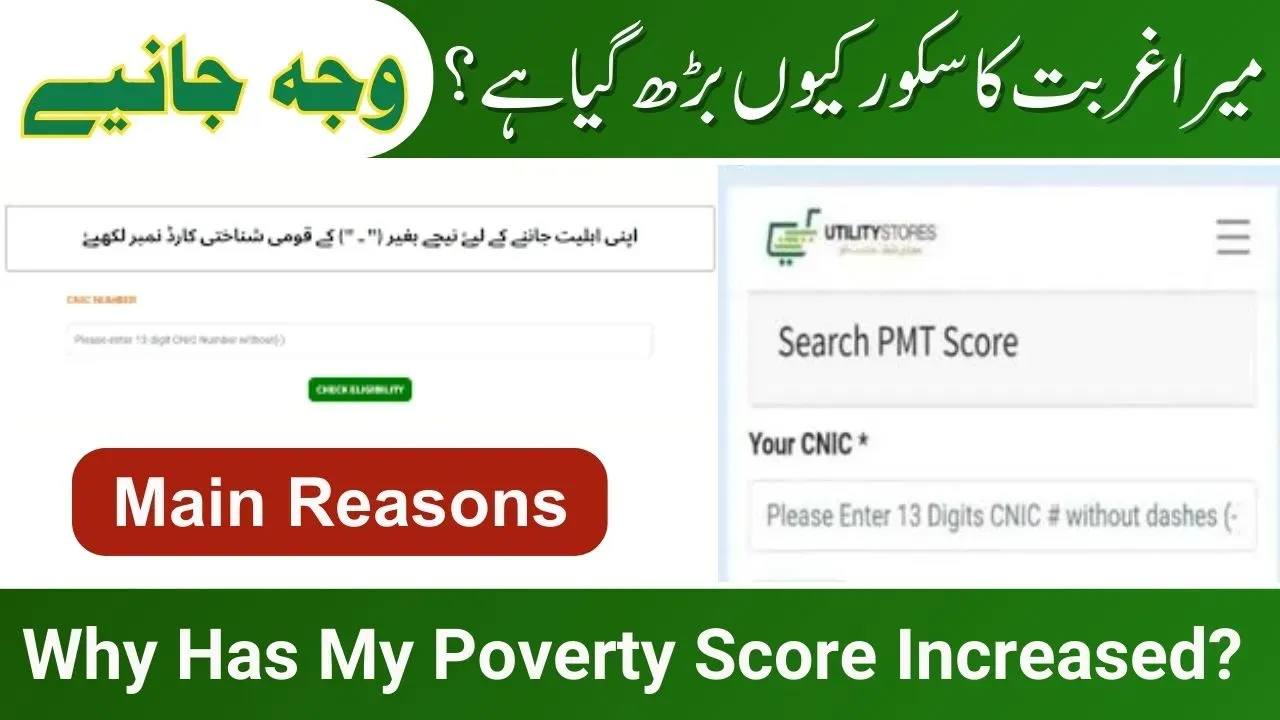Many people have noticed that their poverty scores have increased, and as a result, they are no longer receiving financial assistance from the Benazir Income Support Program (BISP). This has raised concerns among those who rely on this support. If you are wondering why your poverty score has gone up and what you can do to reduce it, this article will provide you with all the information you need. We will explain how to lower your poverty score so you can re-register for BISP and start receiving assistance again.
Table of Content
How to Decrease Your Poverty Score
Your poverty score is an important factor that determines your eligibility for BISP. If your score is too high, you may not qualify for financial assistance. However, there are steps you can take to lower your poverty score:
- Check Your Eligibility: Before you can lower your poverty score, it’s important to understand where you stand. You can do this by visiting the BISP website and checking your eligibility.
- Update Your Information: One of the main reasons your poverty score might be high is that your information is not up to date. Make sure all your details, such as your income and assets, are accurately reported.
- Follow the Guidelines: There are specific criteria that affect your poverty score. For example, not owning land, not having a bank account, and not having traveled abroad can help lower your score.
- Re-register with BISP: Once you have taken steps to lower your poverty score, you can re-register with BISP. If your score is below 40%, you are more likely to qualify for assistance.
By following these steps, you can improve your chances of receiving financial support from BISP.
| Point | Details |
| Check Eligibility | Visit BISP website to check status |
| Update Information | Ensure details are current with NADRA |
| Lowering Score | Follow guidelines to reduce score |
| Re-Register for BISP | Register if score is below 40% |
Why the Poverty Score Is Important
The poverty score is a critical factor in determining whether you are eligible for BISP. When you apply for BISP, your poverty score is used to assess your financial situation. If your score is too high, it means that you may not need as much financial assistance as someone with a lower score. This is why it’s important to keep your score low if you want to qualify for BISP.
Your poverty score is calculated based on several factors, including your income, assets, and living conditions. If any of these factors change, your score could increase. For example, if you acquire new assets or start earning more money, your score may go up, making you ineligible for BISP.
It’s important to monitor your poverty score regularly and make sure that it reflects your current financial situation. This way, you can avoid losing your eligibility for BISP and continue receiving the support you need.
The Importance of Updating Information Through NADRA
One of the main reasons your poverty score may increase is because your information has not been updated with NADRA, the National Database and Registration Authority. If your information is outdated, it may not accurately reflect your current financial situation, leading to a higher poverty score.
To avoid this, it’s important to regularly update your information with NADRA. This includes reporting any changes in your income, assets, or living conditions. By keeping your information up to date, you can ensure that your poverty score remains accurate and that you continue to qualify for BISP.
Updating your information with NADRA is a straightforward process. You can visit a NADRA office or use their online services to make sure your details are current. Once your information is updated, your poverty score will be recalculated, and you may become eligible for BISP again.

How to Check Your Eligibility and Register for BISP
If you want to check your eligibility for BISP and register for the program, here’s what you need to do:
- Visit the BISP Website: Start by going to the official BISP website.
- Check Your Eligibility: On the website, you will find an option to check your eligibility. Enter your CNIC (Computerized National Identity Card) number and submit the form.
- Register for BISP: If your poverty score is low enough, you will be able to register for BISP. Fill out the registration form and submit it online.
- Follow Up: After registering, keep an eye on your application status. If approved, you will start receiving financial assistance.
By following these steps, you can easily check if you qualify for BISP and register for the program if you are eligible.
Conclusion
If your poverty score has increased, it’s important to take action to lower it so you can continue receiving financial assistance from BISP. By updating your information with NADRA, following the guidelines for reducing your score, and regularly checking your eligibility, you can improve your chances of staying in the program. Remember, the poverty score is a key factor in determining whether you qualify for BISP, so keeping it low is essential.
For more detailed information on how to lower your poverty score and register for BISP, be sure to visit the official BISP website. By staying informed and proactive, you can ensure that you receive the support you need.
Also Read: Good News: Benazir Taleemi Wazifa 4500 Registration for Needy Children 2024
FAQs
Why has my Poverty Score increased?
Your poverty score may have increased due to outdated information or changes in your financial situation.
How can I decrease my Poverty Score?
You can lower your poverty score by updating your information with NADRA and ensuring that you meet the criteria for a lower score.
Why is the Poverty Score important for BISP registration?
The poverty score determines your eligibility for BISP. A lower score increases your chances of qualifying for financial assistance.
